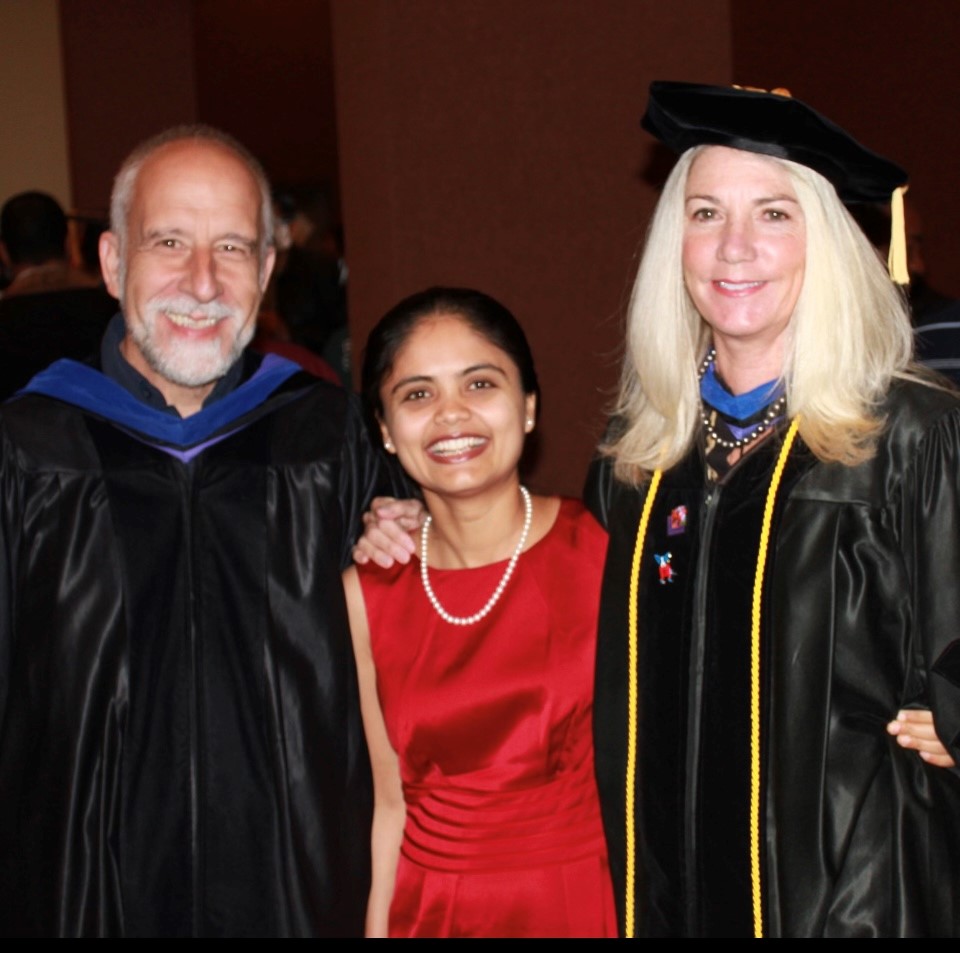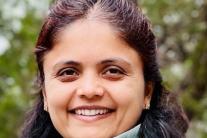Alumni news: Sharmila Pathikonda
Wed, 10/26/2022 - 8:16amOn 1 October 2022 alumna Sharmila Pathikonda (PhD 2009) began a new stage in her career when she assumed the positions of Assistant Vice Chancellor for Research and Director of Research Development at the Texas A&M University System.
The Texas A&M University System includes 11 universities and 8 Texas state agencies. In her position, Dr. Pathikonda will play a key role in the development of research efforts and proposals, mainly focusing on large strategic initiatives involving multiple investigators from multiple institutions. Altogether these efforts are aimed at enhancing the research enterprise across the Texas A&M University System.
Please read on to learn more about Dr. Pathikonda, what she has done since receiving her PhD in Environmental and Evolutionary Biology, and why she counts Drs. Susan Mopper, Karl Hasenstein, and Azmy Ackleh as important influences on her professional development. Below you will find Dr. Pathikonda's responses to a few of our questions and prompts.
What was your dissertation topic and research?
My dissertation tile is Ecological and Physiological Responses to Salinity Stress: Comparison of Native and Invasive Congeners (May 2009). I studied how saltwater intrusion into freshwater marshes affects the distribution of freshwater Irises and how saltwater-adapted invasive Irises compete against native Irises in the context of salinity stress. For this research, I used field experiments and mathematical modeling to develop an understanding of how salinity stress would impact Louisiana’s freshwater marsh plants.
Expand on your relationships with the mentors you mentioned (Susan Mopper, Karl Hasenstein and Azmy Ackleh) and how they affected your profession path.

I came to the University of Louisiana at Lafayette as an international student. I had a lifelong interest in plants and the work of Drs. Mopper and Hasenstein was the most interesting to me, and I wanted to develop my skills and expertise in the area of work there. Both of them were major inspirational figures and helped me become a scientist. Dr. Mopper had a great eye for detail and worked hard to instill the same qualities in her students. Dr. Hasenstein was an inspiring mentor and always posed thoughtful and challenging questions, which helped expand my thinking. Besides them, Drs. Azmy Ackleh and Derek Johnson were my committee members who helped train me in the mathematical modeling parts of my research. Dr. Azmy was especially kind and patient enough to integrate me with his graduate students, which helped me make progress with the mathematical modeling parts. Apart from my dissertation research, I had the good fortune of being a Teaching Assistant funded by an NSF BioMath grant, interacting with amazing undergraduate students, and learning from USGS scientist Jacoby Carter. These experiences were highly formative for me as they gave me confidence in my abilities and developed other parts of my professional profile, such as teaching, mentoring, and presenting at international conferences. Altogether, I owe much of my success to the strong foundation built at the Department of Biology, which has served me very well since then. It is not an exaggeration to say that I haven’t had mentors like Susan and Karl before or since my time at UL Lafayette.
What did you do after graduating from UL Lafayette?
Immediately after my PhD I went to the University of Wyoming as a Postdoctoral Research Associate with Dr. Kiona Ogle. The research there built on my experience in mathematical modeling in relation to climate change. There I worked on large plant datasets to understand how climate change would impact the distributions of tree species by applying hierarchical Bayesian modeling. When the lab moved to Arizona State University in 2011, I moved there until the end of my position in 2012. After that, I moved to Texas A&M University in College Station, Texas to a research position, so I could be close to my family. At Texas A&M, I worked in a research lab until 2015, when I took a position in Research Administration.
Expand on your work in an administrative capacity.
I started in an administrative role in 2015 when I joined the Sponsored Research Services of Texas A&M University. Since then, my work has primarily involved providing specialist scientific support on federal grant proposals. My strengths in biology, mathematics, and statistics have proved invaluable. They have allowed me to provide valuable feedback in fields as diverse as cancer biology, climate science, energy innovation, and nuclear engineering. My career progression has been possible due to the passion I have for science, my strong training in quantitative sciences, and the thrill of participating in the development of innovative new research projects. My current role is the latest point in my journey in research administration that began seven years ago, but it is the cumulative effect of my graduate training which began nearly 20 years ago.
Expand a bit more on you duties, goals, and aspirations for your new position.
The Texas A&M University system is an exciting and diverse composition of eleven universities and eight state agencies. Each of them is involved in pursuing research and education as befitting their land, air, sea, and space grant missions. The Texas A&M University System has a research expenditure of over $1.2B, and the vision for the System is both expansive and ambitious. There is a critical role for research development in such an environment. My office aims to provide a high standard of support to enhance the research enterprise of the System. However, as is common in any large and complex System, much work remains to be done to make the experience better for researchers and to maintain the upward trajectory of research expenditure. My office is expanding as we seek to provide additional value-added support services for strategic research development efforts. I aspire to play a key role in enhancing the experience of researchers as they seek to develop their research programs and help expand our research portfolio.

